
16 Jun Demystifying Salesforce Pricing – Revenue Cloud
Understanding the Core Building Blocks of Salesforce Pricing
Before diving into configuration or process design in Salesforce Revenue Cloud, it’s important to understand the key conceptual components that drive pricing and qualification logic: Context Definitions, Decision Tables, Pricing Recipes, and Pricing Procedures.
These four components work together in a logical sequence to bring business rules to life—allowing Revenue Cloud to support highly dynamic, personalized, and rule-driven pricing strategies.
1. Context Definition: The Data Blueprint
A Context Definition is the foundation layer in the pricing system. It acts as a logical data model that defines how information is structured, exchanged, and processed during operations like pricing, product qualification, or catalog browsing.
- Think of it as a container of input and output data – establishing relationships between data points (called nodes), their fields (attributes), and their associated context tags.
- It serves as the interface for data exchange between Salesforce records and procedures like pricing or qualification.
- Context Definitions enable clean separation between business logic and data models, simplifying how custom fields or object relationships (e.g., custom fields on Products, Quotes, Orders) are supported.
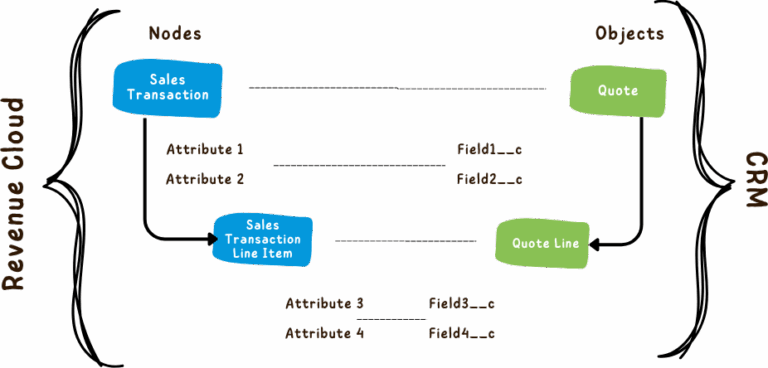
Purpose:
To ensure that pricing and qualification procedures receive the correct input and output data—making the entire system flexible, scalable, and easier to maintain.
2. Decision Tables: The Business Rule Repository
Decision Tables are the rule engines behind Revenue Cloud’s pricing logic that return an output based on a combination of input values.
- They store the criteria and business rules for qualifying/disqualifying products or calculating prices (like list prices, volume discounts, or attribute-based pricing).
- These tables are built on Salesforce objects (standard or custom), where each row represents a rule and columns define matching criteria.
- During pricing or qualification, the system matches input data against these rules to determine the appropriate output.
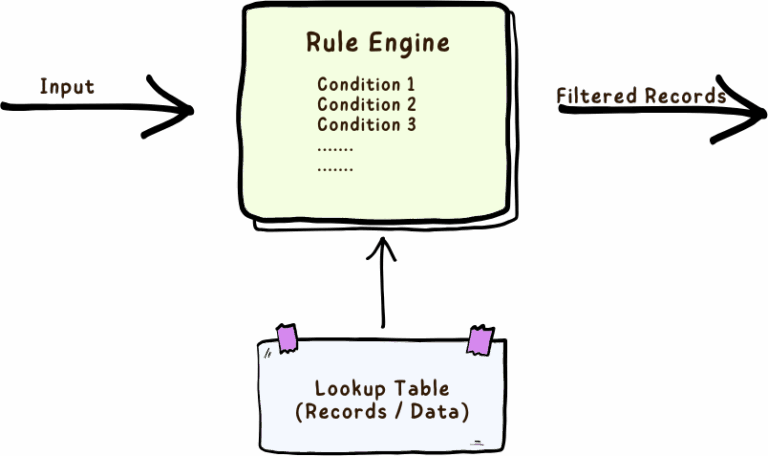
Purpose:
To centralize and structure rule management, so businesses can configure and update pricing and qualification criteria without modifying procedures or code.
3. Pricing Recipe: The Rule Organizer
A Pricing Recipe acts as a container and configuration hub for grouping relevant decision tables used in pricing.
- It ensures that only the decision tables linked to the recipe are available to procedures during execution.
- Salesforce provides a default recipe (NGPDefaultRecipe), but organizations can create their own to group custom decision tables.
- Only one active recipe is allowed per org, making this a critical configuration step in the pricing setup.
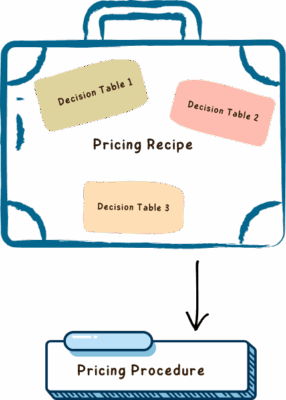
Purpose:
To streamline the management and deployment of decision tables, providing a clear and centralized control mechanism for organizing pricing logic across orgs or environments.
4. Pricing Procedure: The Pricing Engine
The Pricing Procedure is the execution layer that pulls everything together.
- It’s a stack of Pricing Elements, where each element performs a specific task—like applying a list price, adding a discount, or doing a custom price adjustment.
- These elements call on Decision Tables (via the active Pricing Recipe) to get the rules they need.
- The Pricing Procedure is linked to a Context Definition, ensuring it receives the correct input data and knows where to write back the results.
Types of Pricing Procedures:
- Revenue Management Default Pricing Procedure – for transactional pricing (quotes/orders).
- Product Discovery Pricing Procedure – for catalog pricing.
- Others include procedures for qualification logic or custom flows.
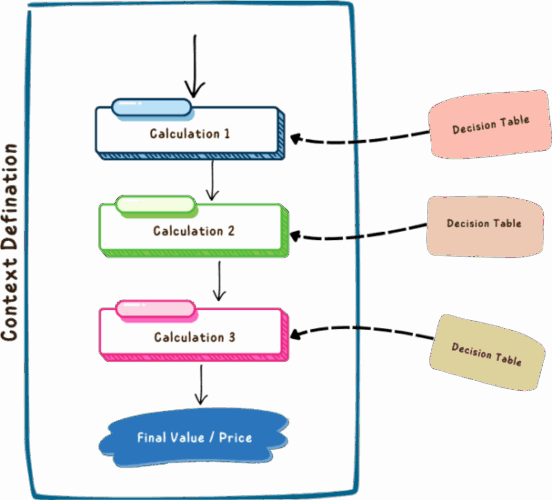
Purpose:
To orchestrate the end-to-end pricing logic, ensuring consistent and transparent price calculation using a well-defined, step-by-step approach.
How These Components Work Together?
Here’s the high-level sequence of how these components interact during a pricing operation:
1. Define the Data Structure (Context Definition)
- Establish how data will flow.
- Map Salesforce objects and fields to nodes and attributes.
- Activate it to be used by procedures.
2. Configure the Business Rules (Decision Tables)
- Populate standard/custom objects with rule data.
- Use decision tables to store criteria and matching logic.
- Associate tables with the active Pricing Recipe.
3. Organize Rules for Use (Pricing Recipe)
- Group decision tables that the pricing engine should use.
- Ensure only relevant rules are available to procedures.
4. Build the Calculation Logic (Pricing Procedure)
- Stack Pricing Elements in a logical order (e.g., List Price → Volume Discount → Net Price).
- Each element calls a decision table managed by the recipe.
- Link the procedure to a Context Definition for data flow.
- Simulate and activate the procedure.
5. Runtime Execution
- When a user browses products or creates a quote, the system:
- Loads the Context Definition’s input data.
- Runs the Pricing Procedure.
- Each element consults its Decision Table.
- Outputs (like list price, discounts, and net price) are written back to the context.
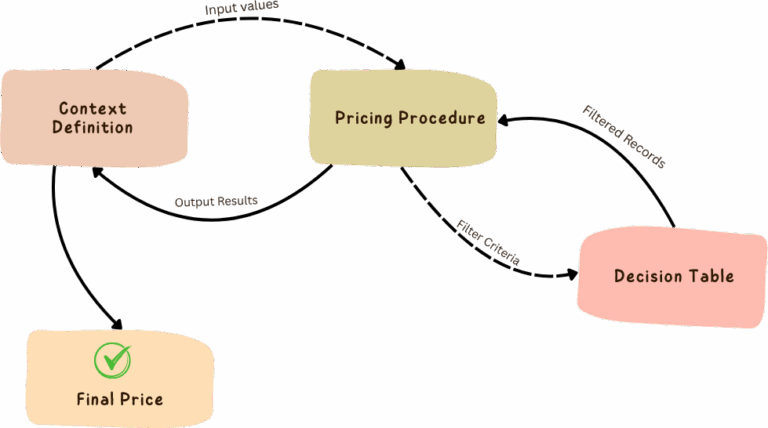
Why This Matters?
Understanding the role and sequence of these components is essential before working on Revenue Cloud pricing configurations. It ensures you:
✅ Know where to define rules vs. where to apply them
✅ Can effectively map business logic into a pricing procedure
✅ Avoid configuration mistakes that cause runtime errors
✅ Gain better visibility and control over pricing behavior
Whether you’re configuring for guided selling, quote automation, or catalog pricing—this structured model gives Revenue Cloud the flexibility and power to support complex business scenarios.

